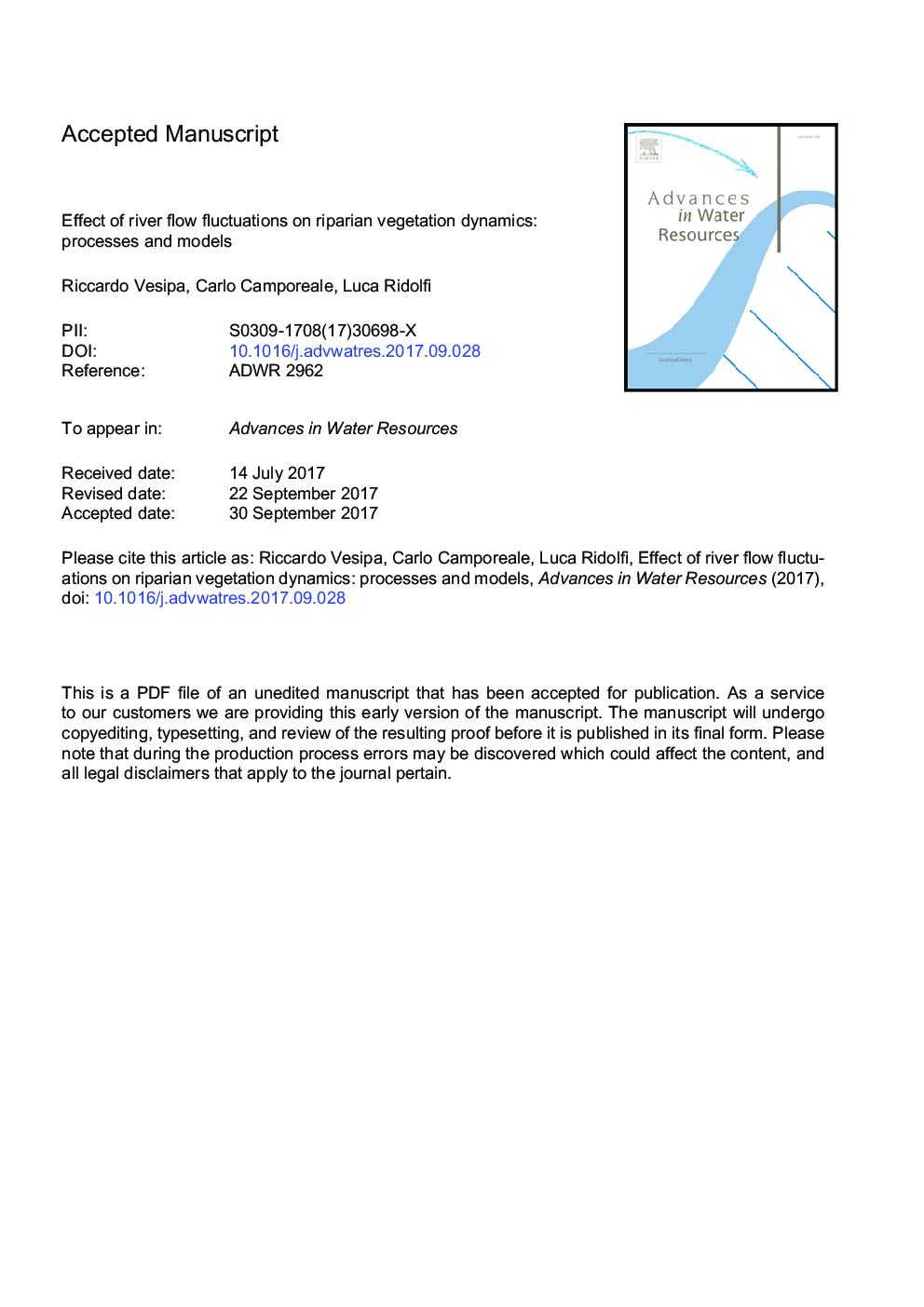| Article ID | Journal | Published Year | Pages | File Type |
|---|---|---|---|---|
| 5763650 | Advances in Water Resources | 2017 | 80 Pages |
Abstract
Several decades of field observations, laboratory experiments and mathematical modelings have demonstrated that the riparian environment is a disturbance-driven ecosystem, and that the main source of disturbance is river flow fluctuations. The focus of the present work has been on the key role that flow fluctuations play in determining the abundance, zonation and species composition of patches of riparian vegetation. To this aim, the scientific literature on the subject, over the last 20 years, has been reviewed. First, the most relevant ecological, morphological and chemical mechanisms induced by river flow fluctuations are described from a process-based perspective. The role of flow variability is discussed for the processes that affect the recruitment of vegetation, the vegetation during its adult life, and the morphological and nutrient dynamics occurring in the riparian habitat. Particular emphasis has been given to studies that were aimed at quantifying the effect of these processes on vegetation, and at linking them to the statistical characteristics of the river hydrology. Second, the advances made, from a modeling point of view, have been considered and discussed. The main models that have been developed to describe the dynamics of riparian vegetation have been presented. Different modeling approaches have been compared, and the corresponding advantages and drawbacks have been pointed out. Finally, attention has been paid to identifying the processes considered by the models, and these processes have been compared with those that have actually been observed or measured in field/laboratory studies.
Related Topics
Physical Sciences and Engineering
Earth and Planetary Sciences
Earth-Surface Processes
Authors
Riccardo Vesipa, Carlo Camporeale, Luca Ridolfi,
